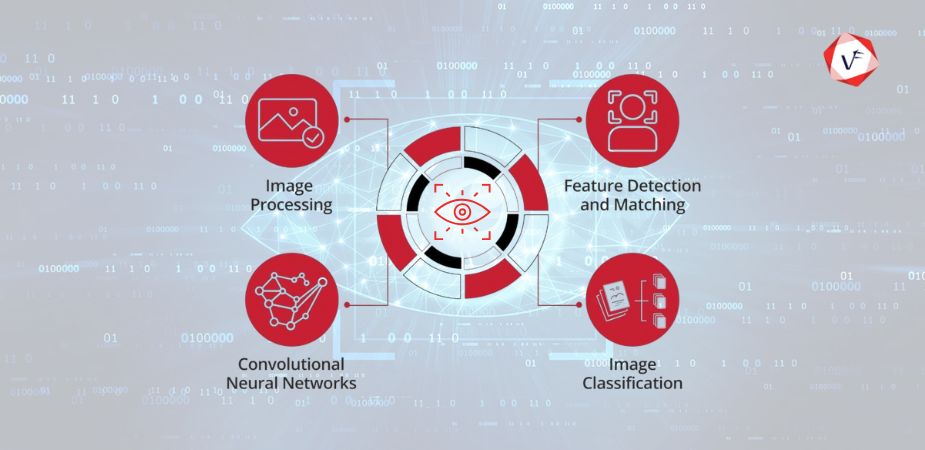Technology plays a pivotal role in driving efficiency, innovation, and competitive advantage. However, with the rapid proliferation of new technologies, there comes an inevitable challenge: the rise of Shadow IT. Shadow IT refers to the use of information technology systems, devices, software, applications, and services without explicit approval or knowledge of the organization’s IT department. This phenomenon can bring both significant benefits and serious risks to an organization.
The Emergence of Shadow IT
Shadow IT has emerged as a response to the increasing need for agility and flexibility within organizations. Employees often find that the tools and solutions provided by their IT departments are either too slow to implement, too restrictive, or fail to meet their specific needs. To circumvent these limitations, they turn to alternative, often cloud-based, solutions that are easily accessible and require minimal setup. These might include project management tools, file-sharing applications, communication platforms, and more.
The Drivers of Shadow IT
Several factors contribute to the rise of Shadow IT within organizations:
- Consumerization of IT: With the consumerization of IT, employees are accustomed to using sophisticated and user-friendly applications in their personal lives. This familiarity drives them to seek out similar tools at work, bypassing corporate IT policies.
- Cloud Computing: The advent of cloud computing has made it easier than ever for employees to access and deploy applications without involving the IT department. Cloud services offer scalability, flexibility, and convenience, making them attractive options for employees seeking quick solutions.
- BYOD Policies: Bring Your Own Device (BYOD) policies, which allow employees to use their devices for work purposes, further fuel the growth of Shadow IT. Personal devices often come with pre-installed applications and can easily access a plethora of cloud services.
- Remote Work: The shift towards remote work has accelerated the adoption of Shadow IT. Employees working from home or other remote locations often resort to unauthorized tools to collaborate and communicate more effectively.
Benefits of Shadow IT
Despite the risks associated with Shadow IT, it can also bring several benefits to an organization:
- Increased Agility: Shadow IT allows employees to quickly access and implement the tools they need to perform their tasks, enhancing overall productivity and responsiveness.
- Innovation: By experimenting with new technologies and solutions, employees can drive innovation within the organization. Shadow IT can serve as a testing ground for new ideas and approaches that might eventually be adopted organization-wide.
- Cost Savings: In some cases, Shadow IT can lead to cost savings. Employees might find cheaper or more efficient alternatives to the officially sanctioned tools, reducing the overall expenditure on IT resources.
- Employee Satisfaction: Empowering employees to choose the tools that best meet their needs can boost morale and job satisfaction. This autonomy can lead to a more motivated and engaged workforce.
Risks & Challenges of Shadow IT
While the benefits of Shadow IT are clear, the associated risks and challenges cannot be overlooked:
- Security Vulnerabilities: One of the most significant risks of Shadow IT is the potential for security breaches. Unauthorized applications may not adhere to the organization’s security protocols, leading to data leaks, malware infections, and other cyber threats.
- Compliance Issues: Many industries are subject to strict regulatory requirements regarding data handling and privacy. Shadow IT can result in non-compliance, exposing the organization to legal and financial penalties.
- Data Silos: When employees use disparate tools and systems, it can lead to the creation of data silos. This fragmentation of information hinders collaboration and decision-making, reducing overall efficiency.
- Increased IT Complexity: Managing and supporting a multitude of unsanctioned applications can overwhelm the IT department. This increased complexity can strain resources and complicate the maintenance of a cohesive IT infrastructure.
- Hidden Costs: While Shadow IT can initially appear cost-effective, hidden costs can emerge over time. These include expenses related to integrating unauthorized tools with existing systems, addressing security vulnerabilities, and managing data inconsistencies.
Managing Shadow IT
To effectively manage Shadow IT, organizations need to strike a balance between control and flexibility. Here are several strategies to consider:
- Develop a Comprehensive IT Policy: Establish clear policies that define acceptable use of technology and the processes for procuring and using IT resources. Ensure that these policies are communicated effectively to all employees.
- Enhance IT Agility: Improve the responsiveness and flexibility of the IT department by adopting agile methodologies and investing in modern technologies. This can reduce the need for employees to seek out unauthorized solutions.
- Promote Collaboration: Foster a culture of collaboration between the IT department and other business units. Encourage employees to communicate their needs and involve IT in the selection and implementation of new tools.
- Implement Monitoring Tools: Deploy monitoring and auditing tools to track the use of unauthorized applications and identify potential security risks. This proactive approach can help mitigate the impact of Shadow IT.
- Educate Employees: Provide ongoing education and training to employees about the risks and challenges associated with Shadow IT. Promote awareness of security best practices and the importance of compliance.
- Offer Approved Alternatives: Ensure that the IT department provides a range of approved tools and solutions that meet the diverse needs of employees. This can reduce the temptation to resort to unsanctioned applications.
Shadow IT in Different Industries
The impact and prevalence of Shadow IT can vary significantly across different industries. Let’s explore how Shadow IT manifests in various sectors and the unique challenges each faces.
- Technology Sector: In the technology sector, employees are often at the forefront of new innovations and tools. Shadow IT is particularly prevalent here as tech-savvy employees experiment with cutting-edge software and applications to enhance their work. While this can drive significant innovation, it also means that IT departments must stay vigilant to manage the security and integration challenges that arise from the rapid adoption of new technologies.
- Education Sector: In the education sector, Shadow IT is commonly seen in the form of teachers and students using unauthorized educational tools and apps to supplement their learning experiences. While this can lead to more engaging and effective teaching methods, it also raises concerns about data privacy and security, especially when dealing with minors’ information. Educational institutions must balance the need for innovative teaching tools with stringent data protection measures.
- Retail Sector: Retail employees often use unauthorized apps for inventory management, scheduling, and customer relationship management. These tools can enhance operational efficiency and improve customer service, but they also pose risks related to data breaches and integration with existing point-of-sale (POS) systems. Retailers must ensure that any Shadow IT applications are secure and compatible with their broader IT infrastructure.
- Government Sector: Government agencies are typically subject to strict regulatory requirements and security protocols. The use of Shadow IT in this sector can lead to serious compliance violations and national security risks. However, the need for more agile and responsive tools has driven some government employees to seek unauthorized solutions. Managing Shadow IT in this sector requires a delicate balance between maintaining stringent security standards and providing employees with the tools to perform their duties effectively.
Strategies for Reducing Shadow IT
To mitigate the risks associated with Shadow IT, organizations can adopt several proactive strategies:
- Improve IT Responsiveness: One of the primary reasons employees turn to Shadow IT is the perceived slow response of the IT department. By adopting agile methodologies and improving the responsiveness of IT services, organizations can better meet the needs of their employees and reduce the reliance on unauthorized tools.
- Foster a Culture of Innovation: Encourage a culture where innovation is welcomed and supported within the boundaries of the organization’s IT policies. Create a framework where employees can suggest new tools and technologies, and involve them in the decision-making process for adopting new solutions.
- Centralize IT Governance: Implement a centralized IT governance model to oversee the procurement, deployment, and management of all IT resources. This ensures that all technology used within the organization adheres to established security and compliance standards.
- Utilize Shadow IT Discovery Tools: Deploy tools specifically designed to discover and monitor Shadow IT within the organization. These tools can identify unauthorized applications and provide insights into their usage, allowing the IT department to take appropriate action.
- Regularly Update IT Policies: Ensure that IT policies are regularly reviewed and updated to reflect the changing technological landscape. Communicate these policies clearly to all employees and provide training to ensure they understand the importance of adhering to them.
- Encourage the Use of Approved Alternatives: Provide employees with a diverse range of approved tools and solutions that meet their needs. By offering robust alternatives, organizations can reduce the temptation for employees to seek out unauthorized applications.
The Future of Shadow IT
As technology continues to evolve, the phenomenon of Shadow IT is likely to persist. Organizations must adapt to this reality by developing strategies that leverage the benefits of Shadow IT while minimizing the associated risks. By embracing a proactive and flexible approach, businesses can harness the power of Shadow IT to drive innovation and competitive advantage.
Final Thoughts
Shadow IT represents both a challenge and an opportunity for modern organizations. While it can enhance agility, innovation, and employee satisfaction, it also poses significant risks related to security, compliance, and data management. By understanding the drivers, benefits, and challenges of Shadow IT, organizations can develop effective strategies to manage and mitigate its impact. In this context, Vofox’s IT services provide an excellent option for businesses seeking to navigate the complexities of Shadow IT, offering comprehensive solutions that balance control with flexibility. Vofox’s IT services are tailored to help organizations manage their IT infrastructure effectively, ensuring security, compliance, and seamless integration of new technologies. By partnering with Vofox, businesses can leverage expert guidance and support to harness the potential of Shadow IT while safeguarding their critical assets. Reach out to us to get started today.





